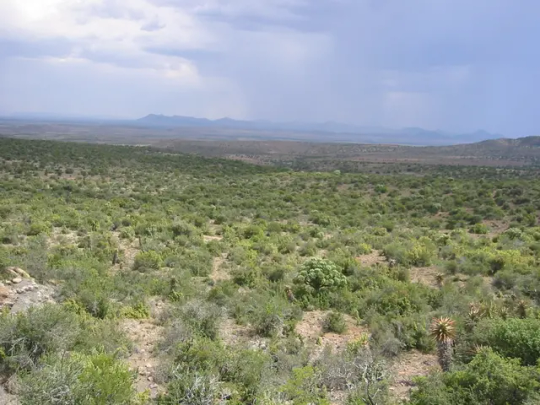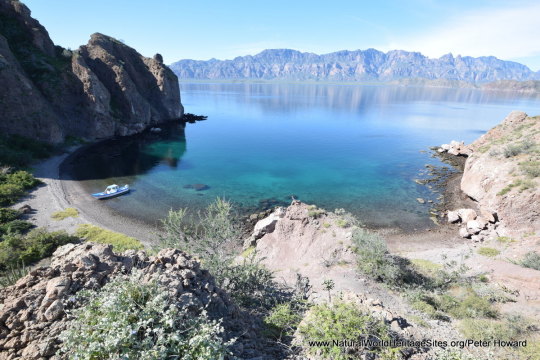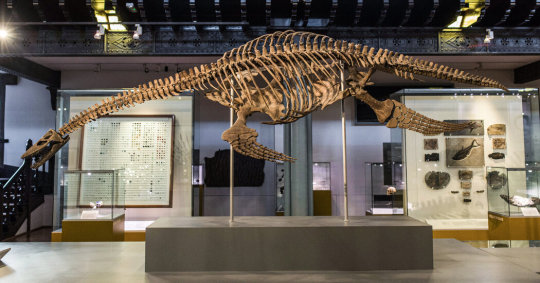#Earth Environment
Text
Sound reveals giant blue whales dance with the wind to find food
https://sciencespies.com/environment/sound-reveals-giant-blue-whales-dance-with-the-wind-to-find-food/
Sound reveals giant blue whales dance with the wind to find food
A study by MBARI researchers and their collaborators published today in Ecology Letters sheds new light on the movements of mysterious, endangered blue whales. The research team used a directional hydrophone on MBARI’s underwater observatory, integrated with other advanced technologies, to listen for the booming vocalizations of blue whales. They used these sounds to track the movements of blue whales and learned that these ocean giants respond to changes in the wind.
Along California’s Central Coast, spring and summer bring coastal upwelling. From March through July, seasonal winds push the top layer of water out to sea, allowing the cold water below to rise to the surface. The cooler, nutrient-rich water fuels blooms of tiny phytoplankton, jumpstarting the food web in Monterey Bay, from small shrimp-like krill all the way to giant whales. When the winds create an upwelling event, blue whales seek out the plumes of cooler water, where krill are most abundant. When upwelling stops, the whales move offshore into habitat that is transected by shipping lanes.
“This research and its underlying technologies are opening new windows into the complex, and beautiful, ecology of these endangered whales,” said John Ryan, a biological oceanographer at MBARI and lead author of this study. “These findings demonstrate a new resource for managers seeking ways to better protect blue whales and other species.”
The directional hydrophone is a specialized underwater microphone that records sounds and identifies the direction from which they originate. To use this technology to study blue whale movements, researchers needed to confirm that the hydrophone reliably tracked whales. This meant matching the acoustic bearings to a calling whale that was being tracked by GPS. With confidence in the acoustic methods established, the research team examined two years of acoustic tracking of the regional blue whale population.
This study built upon previous research led by MBARI Senior Scientist Kelly Benoit-Bird, which revealed that swarms of forage species — anchovies and krill — reacted to coastal upwelling. This time, researchers combined satellite and mooring data of upwelling conditions and echosounder data on krill aggregations with the acoustic tracks of foraging blue whales logged by the directional hydrophone.
“Previous work by the MBARI team found that when coastal upwelling was strongest, anchovies and krill formed dense swarms within upwelling plumes. Now, we’ve learned that blue whales track these dynamic plumes, where abundant food resources are available,” explained Ryan.
advertisement
Blue whales recognize when the wind is changing their habitat and identify places where upwelling aggregates their essential food — krill. For a massive animal weighing up to 150 tonnes (165 tons), finding these dense aggregations is a matter of survival.
While scientists have long recognized that blue whales seasonally occupy Monterey Bay during the upwelling season, this research has revealed that the whales closely track the upwelling process on a very fine scale of both space (kilometers) and time (days to weeks).
“Tracking many individual wild animals simultaneously is challenging in any ecosystem. This is especially difficult in the open ocean, which is often opaque to us as human observers,” said William Oestreich, previously a graduate student at Stanford University’s Hopkins Marine Station and now a postdoctoral fellow at MBARI. “Integration of technologies to measure these whales’ sounds enabled this important discovery about how groups of predators find food in a dynamic ocean. We’re excited about the future discoveries we can make by eavesdropping on blue whales and other noisy ocean animals.”
Background
Blue whales (Balaenoptera musculus) are the largest animals on Earth, but despite their large size, scientists still have many unanswered questions about their biology and ecology. These gentle giants seasonally gather in the Monterey Bay region to feed on small shrimp-like crustaceans called krill.
advertisement
Blue whales are elusive animals. They can travel large distances underwater very quickly, making them challenging to track. MBARI researchers and collaborators employed a novel technique for tracking blue whales — sound.
MBARI’s MARS (Monterey Accelerated Research System) observatory offers a platform for studying the ocean in new ways. Funded by the National Science Foundation, the cabled observatory provides continuous power and data connectivity to support a variety of instruments for scientific experiments.
In 2015, MBARI researchers installed a hydrophone, or underwater microphone, on the observatory. The trove of acoustic data from the hydrophone has provided important insights into the ocean soundscape, from the migratory and feeding behaviors of blue whales to the impact of noise from human activities.
In 2019, MBARI and the Naval Postgraduate School installed a second hydrophone on the observatory. The directional hydrophone gives the direction from which a sound originated. This information can reveal spatial patterns for sounds underwater, identifying where sounds came from. By tracking the blue whales’ B call — the most powerful and prevalent vocalization among the regional blue whale population — researchers could follow the movements of individual whales as they foraged within the region.
Researchers compared the directional hydrophone’s recordings to data logged by tags that scientists from Stanford University had previously deployed on blue whales. Validating this new acoustic tracking method opens new opportunities for simultaneously logging the movements of multiple whales. It may also enable animal-borne tag research by helping researchers find whales to tag. “The integrated suite of technologies demonstrated in this paper represents a transformative tool kit for interdisciplinary research and mesoscale ecosystem monitoring that can be deployed at scale throughout protected marine habitats. This is a game changer and brings both cetacean biology and biological oceanography to the next level,” said Jeremy Goldbogen, an associate professor at Stanford University’s Hopkins Marine Station and a coauthor of the study.
This new methodology has implications not only for understanding how whales interact with their environment and one another but also for advancing management and conservation.
Despite protections, blue whales remain endangered, primarily from the risk of collisions with ships. This study showed that blue whales in Monterey Bay National Marine Sanctuary regularly occupy habitat transected by shipping lanes. Acoustic tracking of whales may provide real-time information for resource managers to mitigate risk, for example, through vessel speed reduction or rerouting during critical periods. “These kinds of integrated tools could allow us to spatially and temporally monitor, and eventually even predict, ephemeral biological hotspots. This promises to be a watershed advancement in the adaptive management of risks for protected and endangered species,” said Brandon Southall, president and senior scientist for Southall Environmental Associates Inc. and a coauthor of the research study.
Support for this research was provided by the David and Lucile Packard Foundation. The National Science Foundation funded the installation and maintenance of the MARS cabled observatory through awards 0739828 and 1114794. Directional acoustic processing work was supported by the Office of Naval Research, Code 32. Tag work was funded in part by the National Science Foundation (IOS-1656676), the Office of Naval Research (N000141612477), and a Terman Fellowship from Stanford University.
#Environment
#10-2022 Science News#2022 Science News#acts of science#Earth Environment#earth science#Environment and Nature#everyday items#Nature Science#New#News Science Spies#October 2022 Science News#Our Nature#planetary science#production line#sci_evergreen1#Science#Science Channel#science documentary#Science News#Science Spies#Science Spies News#Space Physics & Nature#Space Science#Environment
36 notes
·
View notes
Text

Confirmed: Summer 2023 Hottest in NASA’s Record
All three months of summer 2023 broke records. July 2023 was the hottest month ever recorded, and the hottest July. June 2023 was the hottest June, and August 2023 was the hottest August.
NASA’s temperature record, GISTEMP, starts in 1880, when consistent, modern recordkeeping became possible. Our record uses millions of measurements of surface temperature from weather stations, ships and ocean buoys, and Antarctic research stations. Other agencies and organizations who keep similar global temperature records find the same pattern of long-term warming.
Global temperatures are rising from increased emissions of greenhouse gasses, like carbon dioxide and methane. Over the last 200 years, humans have raised atmospheric CO2 by nearly 50%, primarily through the burning of fossil fuels.
Drivers of climate change, both natural and human-caused, leave distinct fingerprints. Through observations and modeling, NASA researchers confirm that the current warming is the result of human activities, particularly increased greenhouse gas emissions.
6K notes
·
View notes
Text




Earth-138 (Spider-Punk) concept art for Spider-Man: Across the Spider-Verse by Patrick O'Keefe
"It needed to feel like something that was wheat pasted on the wall of an illegal after hours punk venue. His world pays homage to the punk posters of The Sex Pistols, Buzzcocks, My chemical Romance."
- Patrick O'Keefe on Twitter
#spider hq library#spiderverse#spider verse#across the spiderverse#atsv#spider man: across the spiderverse#concept art#environment art#earth 138#patrick o'keefe
2K notes
·
View notes
Text

Poem for Earth Day. From Matthew Olzmann's book, Constellation Route. (Alice James Books, 2022)
11K notes
·
View notes
Text
youtube
#Science#Entertainment#Documentaries#Cosmology#Earth Environment#SciFi#sci-fi#Humanity#sun#mars#jupiter#space#myths#Science Fiction#what happens if#possible worlds#biggest questions in science#what if scenario#solar system#time travel#science fiction#human body#hypothetical#science documentaries#science documentary#mysteries#science fair projects#science experiments#science experiment#periodic table
0 notes
Text
"People assume that in the 50 years since the first Earth Day we've made no progress. That we're in a worse position now than we were in the 1970s, that there's no point in environmental action," [...]
Quite the opposite is true. Climate-friendly advances that would have seemed impossible even 10 years ago are now commonplace. And three times in the past 50 years humanity has faced--and fixed--massive, man-made global environmental issues.
The fight isn't won yet, but don't forget that we have made enormous progress.
We would be in a much, much worse position if it wasn't for all the incredible work of environmental activists who came before us, most of whose names and contributions we will never know. They are the reason that we have a fighting chance now, and we owe it to them to pick up their banner and keep running.
#earth day#climate change#environment#global warming#hope#climate anxiety#climate grief#ecoanxiety#ecogrief
1K notes
·
View notes
Text
A lesson on the greenhouse effect; Dr. Carl Sagan testified before Congress in 1985 on climate change l carlsagandotcom/full vid
#climate change#greenhouse effect#earth#climate crisis#environment#carl sagan#informative#science#planets#greenhouse gases#global warming
1K notes
·
View notes
Text
Reblog this and put in the tags what country you’re from and all the science classes you took in high school (for non Americans that’s approximately when you’re 14, 15, 16, and 17 years old)
13K notes
·
View notes
Text
one of the things that i think we should pay attention to, socially, about the disney v. desantis thing is that it is really highlighting the importance of remembering nuance.
in a purely neutral sense, if you engage in something problematic, that does not mean you are necessarily agreeing with what makes it problematic. and i am worried that we have become... so afraid of any form of nuance.
disney isn't my friend, they're a corporate monopoly that bastardized copyright laws for their own benefit, ruin the environment, and abuse their workers (... and many other things). this isn't a hypothetical for me - i grew up in florida. i also worked for the actual Walt Disney World; like, in the parks. i am keenly aware of the ways they hurt people, because they hurt me. i fully believe that part of the reason florida is so conservative is because it's been an "open secret" for years now that disney lobbies the government to keep minimum wage down, and i know they worked hard to keep the parks unmasked and open during the worst parts of Covid. they purposefully keep their employees in poverty. they are in part responsible for the way the floridian government works.
desantis is still, by a margin that is frankly daunting, way worse. the alternative here isn't just "republicans win", it's actual fascism.
in a case like this, where the alternative is to allow actual fascism into united states legislation - where, if desantis wins, there are huge and legal ramifications - it's tempting to minimize the harm disney is also doing, because... well, it's not fascism. but disney isn't the good guy, either, which means republicans are having a field day asking activists oh, so you think their treatment of their employees is okay?
we have been trained there is a right answer. you're right! you're in the good group, and you're winning at having an opinion.
except i have the Internet Prophecy that in 2-3 months, even left-wing people will be ripping apart activists for having "taken disney's side". aren't i an anti-capitalist? aren't i pro-union? aren't i one of the good ones? removed from context and nuance (that in this particular situation i am forced to side with disney, until an other option reveals itself), my act of being like "i hope they have goofy rip his throat out onstage, shaking his lifeless body like a dog toy" - how quickly does that seem like i actually do support disney?
and what about you! at home, reading this. are you experiencing the Thought Crime of... actually liking some of the things disney has made? your memories of days at the parks, or of good movies, or of your favorite show growing up. maybe you are also evil, if you ever enjoyed anything, ever, at all.
to some degree, the binary idealization/vilification of individual motive and meaning already exists in the desantis case. i have seen people saying not to go to the disney pride events because they're cash grabs (they are). i've seen people saying you have to go because they're a way to protest. there isn't a lot of internet understanding of nuance. instead it's just "good show of support" or "evil bootlicking."
this binary understanding is how you can become radicalized. when we fear nuance and disorder, we're allowing ourselves the safety of assuming that the world must exist in binary - good or bad, problematic or "not" problematic. and unfortunately, bigots want you to see the world in this binary ideal. they want you to get mad at me because "disney is taking a risk for our community but you won't sing their praises" and they want me to get mad at you for not respecting the legit personal trauma that disney forced me through.
in a grander scheme outside of disney: what happens is a horrific splintering within activist groups. we bicker with each other about minimal-harm minimal-impact ideologies, like which depiction of bisexuality is the most-true. we gratuitously analyze the personal lives of activists for any sign they might be "problematic". we get spooked because someone was in a dog collar at pride. we wring our hands about setting an empty shopping mall on fire. we tell each other what words we may identify ourselves by. we get fuckin steven universe disk horse when in reality it is a waste of our collective time.
the bigots want you to spend all your time focusing on how pristine and pretty you and your interests are. they want us at each other's throats instead of hand in hand. they want to say see? nothing is ever fucking good enough for these people.
and they want their followers to think in binary as well - a binary that's much easier to follow. see, in our spaces, we attack each other over "proper" behavior. but in bigoted groups? they attack outwards. they have someone they hate, and it is us. they hate you, specifically, and you are why they have problems - not the other people in their group. and that's a part of how they fucking keep winning.
some of the things that are beloved to you have a backbone in something terrible. the music industry is a wasteland. the publishing industry is a bastion of white supremacy. video games run off of unpaid labor and abuse.
the point of activism was always to bring to light that abuse and try to stop it from happening, not to condemn those who engage in the content that comes from those industries. "there is no ethical consumption under late capitalism" also applies to media. your childhood (and maybe current!) love of the little mermaid isn't something you should now flinch from, worried you'll be a "disney adult". wanting the music industry to change for the better does not require that you reject all popular music until that change occurs. you can acknowledge the harm something might cause - and celebrate the love that it has brought into your life.
we must detach an acknowledgment of nuance from a sense of shame and disgust. we must. punishing individual people for their harmless passions is not doing good work. encouraging more thoughtful, empathetic consumption does not mean people should feel ashamed of their basic human capacities and desires. it should never have even been about the individual when the corporation is so obviously the actual evil. this sense that we must live in shame and dread of our personal nuances - it just makes people bitter and hopeless. do you have any idea how scared i am to post this? to just acknowledge the idea of nuance? that i might like something nuanced, and engage in it joyfully? and, at the same time, that i'm brutally aware of the harm that they're doing?
"so what do i do?" ... well, often there isn't a right answer. i mean in this case, i hope mickey chops off ron's head and then does a little giggle. but truth be told, often our opinions on nuanced subjects will differ. you might be able to engage in things that i can't because the nuance doesn't sit right with me. i might think taylor swift is a great performer and a lot of fun, and you might be like "raquel, the jet fuel emissions". we are both correct; neither of us have any actual sway in this. and i think it's important to remember that - the actual scope of individual responsibility. like, i also love going to the parks. Thunder Mountain is so fun. you (just a person) are not responsible for the harm that Disney (the billion dollar corporation) caused me. i don't know. i think it's possible to both enjoy your memories and interrogate the current state of their employment policies.
there is no right way to interrogate or engage with nuance - i just hope you embrace it readily.
#does this make sense#to do be deleted probably yikes#(takes a swing at a wasp's nest)#like i think ppl have started to just be really quiet when they like something 'problematic'#and im like... u can be like -#girl tswift NEEDS to just TAKE A BUS . LIKE?????????????????????#while also being like.#''she's a lot of fun''#if ur personal policy is that u don't support her for that reason that's great#but it's like. eating meat???#like yeah some people won't bc the environment. but the fact i eat meat doesn't mean i hate the earth#like i can say that i think the meat industry is HORRIFIC and also downright cruel to its employees#but like. still enjoy a chicken nugget....#there are people who choose otherwise. it's okay . we are people. i make like no money. u probably don't either#us fighting about whether or not it's Right To Eat The Chicken Tender just distracts from like.#actually turning your ire on the corporation#i hope it's clear what i'm saying here is like. when we fight each other for Purity Reasons#we are just doing the work of corporations . for free. like they WANT us to be doing this lol#it's the fucking DREAM of the upperclass that now ALL forms of responsibility fall on the individual
5K notes
·
View notes
Text
Happy Earth Day!

We share this beautiful planet with over two million other species, from wasps the size of a grain of dust to whales larger than an office building. Yet, many of these species now face extinction due to the ways in which we humans have modified the planet to suit our needs. According to the International Union for the Conservation of Nature (IUCN), 13% of birds, 21% of reptiles, 27% of mammals, 37% of sharks, and 41% of amphibians are currently endangered, and some estimates suggest that 28% of all species on Earth are at risk of extinction in the near future. Imagine you woke up tomorrow and more than a quarter of every plant, animal, and fungus, from the elephants at the zoo to the earthworms beneath the soil, simply vanished, never to be seen ever again. If we choose to continue treating our planet so poorly, this will become a reality.
Here at Consider Nature, we believe the best way to protect our planet is to arm ourselves with knowledge! Over the years, we have written many articles on some of Earth’s coolest, weirdest, and most-endangered species, in the hope of inspiring readers to step up to the plate and protect biodiversity. I hope you will spend a few minutes of your Earth Day today reading about some of the species we believe are worth saving.

Zacaton grasslands in central Mexico, home to the Zacatuche, or volcano rabbit. Image credit: Jurgen Hoth

The Succulent Karoo, one of the most biodiverse ecosystems on Earth and home to the Karoo Padloper. Image credit: Tjeerd Wiersma under CC BY-SA 2.0.

The Gulf of California, home of the critically endangered Vaquita. Image credit: Natural World Heritage Sites.
658 notes
·
View notes
Text
Fossil Find Tantalizes Loch Ness Monster Fans
https://sciencespies.com/news/fossil-find-tantalizes-loch-ness-monster-fans/
Fossil Find Tantalizes Loch Ness Monster Fans

Plesiosaurs went extinct 66 million years ago, but evidence that the long-necked reptiles lived in freshwater, not just oceans, has offered hope to Nessie enthusiasts.
LONDON — Millions of years before the first (alleged) sighting of the Loch Ness monster, populations of giant reptiles swam through Jurassic seas in areas that are now Britain. Known as plesiosaurs, these long-necked creatures were thought to have dwelled exclusively in oceans.
But a discovery published in a paper last week by researchers in Britain and Morocco added weight to a hypothesis that some Loch Ness monster enthusiasts have long clung to: that plesiosaurs lived not just in seas, but in freshwater, too. That could mean, they reasoned excitedly, that Nessie, who is sometimes described as looking a lot like a plesiosaur, really could live in Loch Ness, a freshwater lake.
Local papers have celebrated the finding. It “gives further credit to the idea that Nessie may have been able to survive and even thrive in Loch Ness,” said an article on page 32 of the Inverness Courrier, a biweekly newspaper in the Scottish Highlands. “Loch Ness Monster bombshell,” blared a headline from Britain’s Daily Express tabloid. “Existence of Loch Ness Monster is ‘plausible’” read headlines in The Scotsman, The Telegraph and elsewhere, seizing on a phrase in the University of Bath’s announcement of the study’s findings.
This is not the first study to find that plesiosaurs lived in freshwater. “This new study is simply providing additional evidence for certain members of this group living in freshwater,” said Dean Lomax, a paleontologist and visiting scientist at the University of Manchester. “We’ve always known this.”
But Nick Longrich, the lead author of the study, said his team had one of the stronger cases for it because they found fossils of 12 plesiosaurs, proof that it was not just one plesiosaur that wandered into freshwater and then died there.
“The more plesiosaur fossils discovered in freshwater environments, the more this will further build the picture to explain why plesiosaurs might be turning up in freshwater environments around the world,” said Georgina Bunker, a student who was a co-author of the paper.
Dr. Longrich, a paleontologist and evolutionary biologist at the University of Bath, said it was “completely unexpected” to find the fossil of a plesiosaur that had lived in an 100-million-year-old freshwater river system that is now the Sahara.
While on a research trip to Morocco, he was sifting through a box in the back room of a shop when he spotted a “kind of chunky” bone, which turned out to be the arm of a five-foot long baby plesiosaur. Dr. Longrich paid the cashier no more than 200 Moroccan Dirham, or about $20, after bargaining to bring down the price, and brought the fossils back to Britain for further study.
Nick Longrich/University of Bath
“Once we started looking, the plesiosaur started turning up everywhere,” he said. “It reminds you there’s a lot we don’t know.” (The fossils will be returned to museums in Morocco at a later date, he said.)
As the news of the study made headlines last week, some Nessie fans were hopeful. George Edwards, who was for years the skipper of a Loch Ness tourism boat called the Nessie Hunter, said that for him the new study showed how creatures could adapt to survive in new environments — and that the world is full of mysteries. Take the coelacanth, a bony fish that was thought to have become extinct millions of years ago but was found in 1938 by a South African museum curator on a fishing trawler. “Lo and behold, they found them, alive and kicking,” Mr. Edwards said. “Anything is possible.”
Mr. Edwards said he had seen unexplained creatures in Loch Ness plenty of times: “There’s got to be a family of them.” From what he has seen, the creatures have a big arched back, no fins and are somewhat reminiscent of a plesiosaur.
But there is one detail that some Nessie lovers may have overlooked in their embrace of the plausibility of Nessie’s existence: Plesiosaurs became extinct at the same time as dinosaurs did, some 66 million of years ago. Loch Ness was only formed about 10,000 years ago, and before that it was ice.
Valentin Fischer, an associate professor of paleontology at the University of Liège in Belgium, said that it would currently be impossible for a marine reptile like the plesiosaur to live in Loch Ness.
Nick Longrich/University of Bath
The first recorded sighting of Nessie dates back to the sixth century A.D., when the Irish monk St. Columba was said to have driven a creature into the water. But global interest was revived in the 20th century, after a British surgeon, Col. Robert Wilson, took what became the most famous photo of the Loch Ness monster in 1934. Sixty years later, the photograph was revealed to be a hoax.
But some people were not discouraged, and, ever since, throngs of tourists have traveled to Loch Ness each year in hopes of seeing the monster.
There have been more than 1,100 sightings at Loch Ness, including four this year, according to the register of official sightings.
A famous photograph of the Loch Ness Monster taken in 1934 was later revealed to have been a hoax.Keystone/Getty Images
Steve Feltham, a full-time monster hunter who has lived on the shores of Loch Ness for three decades, said the British-Moroccan study was interesting, but that it was irrelevant to his search. Ever since it became clear that the famous 1934 photo of Nessie was fake, he has stopped believing that Nessie was a plesiosaur. Plesiosaurs have to come up for air, so he figures he would have seen it during the 12 hours a day that he scans the loch. Instead, he scans the water for giant fish that look like a boat turned upside down.
“I struggle to think of any bona fide Nessie hunter that still believes in the plesiosaur,” he said. “The hunt has moved on from that.”
#News
#2022 Science News#8-2022 Science News#acts of science#August 2022 Science News#Earth Environment#earth science#Environment and Nature#everyday items#Nature Science#New#News Science Spies#Our Nature#planetary science#production line#sci_evergreen1#Science#Science Channel#science documentary#Science News#Science Spies#Science Spies News#Space Physics & Nature#Space Science#News
38 notes
·
View notes
Photo

5K notes
·
View notes
Text

For Earth Day, we’re inviting you to take a moment to celebrate our wonderful water world, Earth. As far as we know, our Blue Marble is the only place in the universe with life, and that life depends on water. Snap a photo of yourself outside and tag it #GlobalSelfie – bonus points if your selfie features your favorite body of water! http://go.nasa.gov/3xFt0H0
Make sure to follow us on Tumblr for your regular dose of space!
2K notes
·
View notes
Text










Earth 50101 concept art for Spider-Man: Across the Spider-Verse by Zac Retz
#that's an awesome name#spiderverse#across the spiderverse#atsv#spider verse#spider man: across the spiderverse#concept art#environment art#earth 50101#zac retz
5K notes
·
View notes
Text

#earth day#leftism#socialism#communism#anti capitalism#anarchy#ecosystem#environment#ecology#eco#save the planet#go green#save the earth#recycle#april 22#save the bees#twitter x#save the children
240 notes
·
View notes
Text
One of my maybe unpopular opinions: I think golfing involves an unethical use of land and I don’t like people who golf.
#golf#unpopular opinion#golfing#land use#protect the earth#protect the environment#environmentalism#leftist#leftblr#communist#socialist#communism#socialism#anti capitalist#anti capitalism#leftist politics#human rights#anarchism#anarchist
1K notes
·
View notes